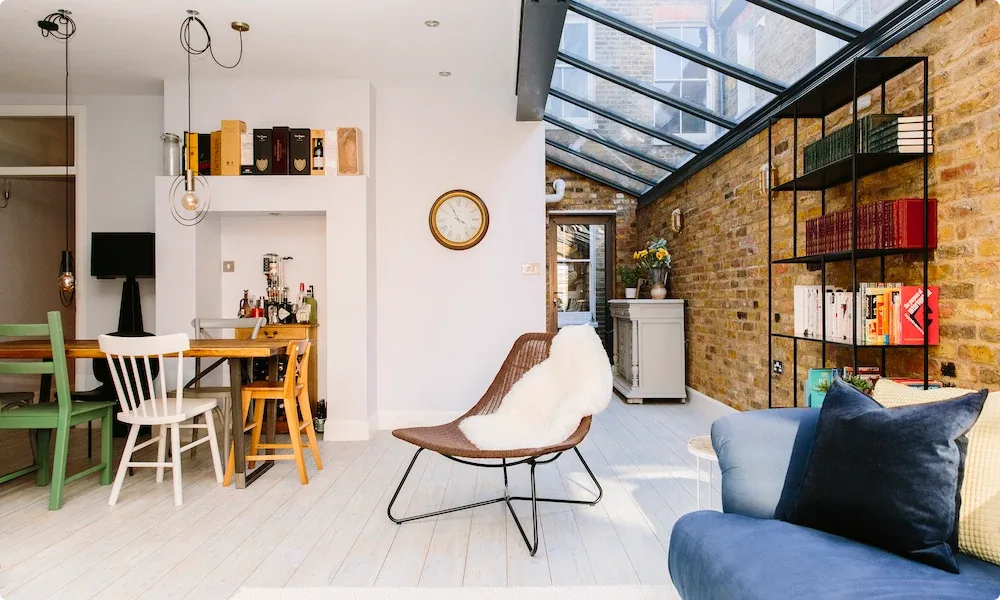When looking for a smart investment, many turn to the buy-to-let market. However, just because this can be lucrative for some, doesn’t mean you should jump in blind. There’s more to buy-to-let properties than just financial gains.
If you’re currently considering investing in a buy-to-let venture, consider this advice from Resi Finance and our partners at Mortgage Advice Bureau.
What does a landlord do?
Before you jump into a big investment, it’s worth considering just what tasks you’ll need to take on as a landlord.
Find the right tenants
Tenants are the backbone of the letting market, so you want to make sure you’re approaching the right ones. Larger homes close to good schools will be ideal for families, while properties around universities might be best suited to students.
Different types of tenants include…
Prime market tenants
These tenants work temporarily in your area and are often high earners who are after a more luxurious property for a short period of time.
Professional tenants
These tenants tend to rent longer as they try to save money for a property of their own.
Social tenants
Due to a lack of social housing, the private rental sector has become more and more popular for those using Universal Credit.
Student tenants
Based around city-centres and university campuses, these tenants usually rent for around one to three years. Unless amenities are right outside the door, good transport links will be a priority for this group.
Remember: the type of tenants you let to can impact the availability of mortgage lenders, as not all lenders will lend on all tenant types.

Students, professionals, which kind of tenants are you looking for?
Maintenance
It’s important to remember that the overall care of the property will fall to you. This means you need to have the funds available for both repairs and general maintenance, such as a broken down boiler or busted window. Not only this, but you need to make sure tenants can contact you easily about such issues, and that you have the right people to fix the problem.
You can minimise the amount of care needed by making smart design decisions. Invest in good quality material which will stand the test of time, and consider low-maintenance features, such as a garden with patio instead of grass.
No rent coming in
The rental market isn’t perfect and can often deliver bad times as well as good. Therefore, it would be smart to have funds set aside to cover you during any downturns. As well as changes in the market, sometimes you might just be unable to attract any tenants. This is why it always pays to have a back-up plan to cover your mortgage during this time.
House in Multiple Occupancy
HMOs allow you to have more tenants, bringing in more income. However, they often get hit by high tenant turnover, as well as incur higher fees and solicitor costs. Alongside this, you’ll need to bear in mind that HMOs can sometimes require different licensing, with properties of five or more tenants needing to be registered.
As a landlord for this type of property, you need to ensure that:
- The house is suitable and offers comfortable living standards for the number of tenants living there.
- Either yourself, as the private landlord, or the letting agents you’ve chosen, needs to be ‘fit and proper’. This means a clear criminal record and no history of having previously breached any landlord laws or code of practice.
- You need to send your annual gas safety certificate to the council.
- When requested, you can provide safety certificates for any electrical appliances.
- You install and maintain smoke alarms in the property.
How much you’ll be able to borrow
The terms around buy-to-let mortgages change a lot, so it’s difficult to predict what kind of market you’ll be heading into. On the whole, landlord mortgages require a higher deposit than you’d need for a residential mortgage, meaning the loan-to-value (LTV) ratio could be smaller than other mortgages, such as first time buyer mortgages.
What tends to affect a buy-to-let mortgage application is…
- Your credit score
- How much deposit you’ve put down
- How risky the loan is
- The type of mortgage product recommended for your circumstances
Therefore, with so many variables and an ever shifting market, we recommend talking to a specialist lender to get the best idea of your borrowing options.

Book a consultation with our team here.
Repayment or interest-only mortgage
As with other mortgage types, there’s a variety of buy-to-let mortgage options out there. One of your first considerations will be whether or not you choose a repayment or interest-only mortgage.
Repayment
During the mortgage term you will pay interest and the capital mortgage balance, so by the end of the full mortgage term the balance will be repaid, as long as you do not change this at a later date.
Interest-only
You only pay back the interest and not the capital borrowed. It’s common for buy-to-let investors to opt for an interest-only mortgage, especially if you’re planning to sell the property at the end of the term.
If you do sell the property, you’ll repay the mortgage outstanding and you’ll also have to pay any tax due on the profit made currently via capital gains. Interest-only also means your monthly mortgage payment will be lower, as you’re only paying the interest and not the capital back, which may leave you with more disposable cash from the rental income to cover additional costs covered later.
Fixed or variable
Fixed rate
As the name suggests, your mortgage repayments are fixed and won’t change month to month. Regardless of what happens to interest rates, your mortgage payments will stay the same whether you fix for two, three, five years etc. Effectively, a fixed mortgage acts as an insurance policy against interest rates going up, therefore you tend to find that fixed rate mortgages have a higher rate as you pay a bit more for the reassurance.
Variable
With a variable mortgage, your mortgage rate will fluctuate, however there are different types of variable mortgages available…
Standard Variable Rates (SVRs): A Standard Variable Rate tends to follow the Bank of England base rate closely but not exactly. For instance, if the Bank rate is dropped to 0.25%, your SVR might only drop 0.2%. However, when the Bank rate goes up, they often increase it by the full amount. More often than not, you move onto an SVR once your fixed rate term has come to an end.
Trackers: A Tracker mortgage will track the Bank rate exactly. This means that whatever interest rate the Bank of England sets, this is the interest rate that you’ll receive on your mortgage. It’s common to have a tracker mortgage for a few years and then you’ll drop onto an SVR after this period comes to an end. There are also some tracker mortgages that follow Libor which is a rate set by the banks themselves.
Discount Rates: As stated in the name, discount rate mortgages offer a discount off the standard variable rate (SVR). The discount period can be for a short period of time e.g two or three years, or it would be the entire term of the mortgage, depending on the deal.
While there are other mortgage types on the market, these are the most common. For a more tailored look into your options, we highly recommend talking to a mortgage broker with buy-to-let experience.

Which is the best loan for you and your buy to let home?
Other purchasing costs you need to consider…
While purchasing a property is going to be a major expense, there are other costs you’ll need to consider. To create a thorough planned out budget, make sure you’re also factoring in…
Arrangement fee
Some mortgages come with a product fee, which is normally larger than on
residential mortgages. This can either be paid upfront or tagged onto the cost of your mortgage. There can sometimes also be an administration charge made by the lender for arranging the credit of your mortgage.
Stamp Duty
If the property you’re investing in is over a certain price, you’ll have to pay a
lump-sum tax known as Stamp Duty Land Tax (SDLT) in England and Northern Ireland, Land Transaction Tax (LTT) in Wales, or Land Building Transaction Tax (LBTT) in Scotland. The price you’ll pay will vary on the amount you paid for the property. This price will also vary depending on whether you already own a property in the UK.
The below rates are different to the standard Stamp Duty rates for residential properties, as you have to pay a 3% surcharge in addition to the standard Stamp Duty rate.
- A property under £125,000 - you pay 3% Stamp Duty
- A property between £125,001 and £250,000 - you pay 5% Stamp Duty
- A property between £250,001 and £925,000 - you pay 8% Stamp Duty
Legal fees
Your solicitor will charge a fee for their services, which includes handling the
contracts, documentation and searches amongst other things.
Valuation
Many lenders will want to carry out a standard mortgage valuation which you may have to pay for. However, you can look to upgrade to a structural survey or a homebuyers survey report for an additional cost, if you wish.
Insurance
For a landlord, building insurance is a must. You might also consider adding on contents insurance, especially if you’re furnishing the property yourself. There are specific landlord policies you can take out, so make sure you’re clear about your relationship to the property when inquiring with a provider.
Alongside these common insurance types, there are other buy-to-let focused products on the marketing, such as landlords and rent insurance. These can cover you for legal expenses for evicting tenants, or if there are periods where the property is empty and you aren’t therefore making any money from rent. However, if you’re purchasing a flat, this may be included in any service charge that is payable, which as a landlord, you would normally be responsible for paying. Your solicitor will be able to confirm if you still need additional buildings insurance.

Legal fees, stamp duty and insurance are just some of the purchasing costs to consider.
The long-term costs
Once you’ve purchased your property, there are still a number of other financial responsibilities you’ll need to cover - both now and in the future.
Taxes - Income Tax and Capital Gains Tax
The money you receive as rent will be subject to income tax. Likewise, when you sell the property, you’ll be taxed on the amount of profit made (rather than the total amount it's sold for).
If you’re unsure about how tax will impact your plans, you’ll need to speak to an independent tax and legal specialist.
Letting agent fees
Letting agents come in all shapes and sizes, especially in terms of the services they can provide. Some will simply help you find tenants and have them move in, while others offer a ‘fully managed’ service, where they liaise with the renter on issues of maintenance and repairs.
Ultimately, the more hands on the letting agent, the bigger fees. Take your time to research different companies and don’t be afraid to haggle!
Court and legal fees
It never hurts to prepare for the worst. Should you need to evict a difficult tenant or get into a dispute, then the courts might need to be brought in. To properly resolve these situations, make sure you have some funds to fall back on for the legal fees.
Repairs, maintenance and decoration
Before you purchase a property, be honest about the renovations needed. In order to attract tenants, is there any immediate work required? What about decoration? Don’t forget what we said about redesigning your property to make it more low maintenance.
In the long-run, you’ll also need to keep some savings available to cover the cost of unforeseen repairs. If you’re unable to carry this work out yourself, then it might be worth approaching handyman services to get an idea of the costs involved for common issues.
Gas safety check
Every year, the property’s gas equipment must be checked to ensure it is still safely installed and maintained. Make sure the engineer who carries out the check gives you a copy of the gas safety record before your tenants move into the property, or within 28 days of them moving in.
Legionella risk assessment
As a landlord, it’s your duty to carry out a risk assessment for legionnaires disease - a lung infection caught by inhaling contaminated water droplets which can be picked up from water systems in properties. This assessment should be carried out periodically, so make sure you read up on your exact responsibilities for Legionella risk assessments as a landlord.
Leasehold properties
Service charges and ground rents are normally all payable by the landlord and not the tenants. You also need to consider the length of lease remaining as this could need extending during your ownership.
Furnished or unfurnished
Whether or not you furnish your property is up to you, and will depend on what kind of tenants you’re looking for. Young professionals tend to prefer furnished as it saves them a job, while families will most likely have furniture of their own. If you do furnish the property, make sure you budget for the eventual replacement and repair of these items.
White goods
Even in unfurnished properties, many landlords still provide white goods to tenants. For example, a cooker, washing machine, fridge and freezer. If these break or need repairing, you’d need to cover the cost of this.

Have you considered the long-term costs and commitments of being a landlord?
How Resi can help…
If this is your first time purchasing a buy-to-let (or you just want to avoid previous mistakes) Resi is here to help.
At Resi, money is one less thing to worry about. We have a team of in-house advisors, who are always on hand to help you find the right finance route for you - even for buy-to-lets.
Our Finance service has access to over 90 different lenders, allowing our team to guide you towards the right deals and rates for you. They can also ensure you get the right amount of funding at the right time and avoid any nasty financial surprises.
Learn more about Resi Finance here.
Please note:
- You may have to pay an early repayment charge to your existing lender if you remortgage.
- Your home may be repossessed if you do not keep up repayments on your mortgage.
- There may be a fee for mortgage advice. The actual amount you pay will depend upon your circumstances. The fee is up to 1%, but a typical fee is £495.
- There is no guarantee that it will be possible to arrange continuous letting of the property, nor that rental income will be sufficient to meet the cost of the mortgage.
























